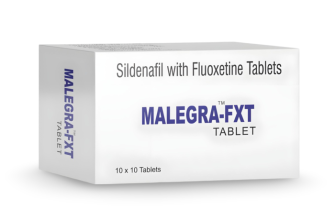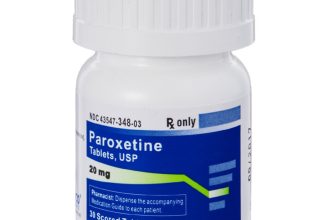Prednisone dose packs are often prescribed for short-term asthma flare-ups, typically providing 5-day courses. A common regimen involves 20mg to 40mg daily, gradually tapering down over the course of treatment. Always follow your doctor’s instructions precisely; they’ll tailor the dosage to your specific needs and medical history.
Remember, prednisone is a corticosteroid, offering powerful anti-inflammatory effects that help control swelling in your airways. This leads to improved breathing and reduced asthma symptoms. However, long-term use carries potential side effects, so these packs are intended for short-term relief, not ongoing management.
While prednisone can swiftly alleviate symptoms, it’s not a cure. Maintaining a consistent asthma action plan, including regular use of preventative medications as prescribed by your physician, is critical for long-term asthma control. This plan should also include strategies for managing triggers and recognizing warning signs of an exacerbation.
Important Note: Before starting any medication, even over-the-counter remedies, consult your doctor or pharmacist, especially if you’re taking other medications or have pre-existing conditions. They can help determine the safest and most effective treatment strategy for you. This information is for general knowledge and does not replace professional medical advice.
- Prednisone Dose Pack for Asthma
- Understanding Prednisone’s Role in Asthma Treatment
- When a Prednisone Dose Pack is Prescribed for Asthma
- How to Properly Take a Prednisone Dose Pack
- Potential Side Effects and Precautions
- Common Side Effects
- Less Common but Serious Side Effects
- Precautions
- Long-Term Asthma Management and Prednisone
- Understanding Your Asthma Action Plan
- Prednisone’s Role in Severe Exacerbations
- Long-Term Strategies for Asthma Control
Prednisone Dose Pack for Asthma
Prednisone dose packs are short-term treatments for asthma exacerbations, usually prescribed for 5-7 days. The typical dosage is 20-60mg per day, depending on severity. Your doctor will determine the appropriate dose based on your specific needs and symptoms.
Take Prednisone exactly as prescribed. Do not stop taking it early, even if you feel better. This can lead to a relapse. Follow your doctor’s instructions carefully, which will include how to gradually reduce the dosage over several days to minimize side effects.
Common side effects include increased appetite, weight gain, trouble sleeping, and mood changes. Severe side effects are rare but include increased blood sugar levels and increased risk of infection. Report any unusual symptoms to your doctor immediately.
Prednisone is not a long-term solution for asthma. It treats flares, but regular asthma management involves inhalers and other preventative strategies. Your physician will discuss a long-term asthma action plan with you that incorporates a combination of medications and lifestyle adjustments.
If you have questions about your Prednisone dose pack or asthma management, contact your healthcare provider for personalized advice. They can answer your questions and tailor your treatment to your specific needs.
Understanding Prednisone’s Role in Asthma Treatment
Prednisone, a corticosteroid, doesn’t cure asthma, but it powerfully reduces inflammation in your airways. This means it swiftly relieves severe asthma symptoms like wheezing and shortness of breath.
Doctors prescribe prednisone in a dose pack for short-term asthma flare-ups. This isn’t a maintenance medication; it targets acute inflammation. Typical treatment involves a 5- to 10-day course, with the dosage tapering down daily to minimize side effects.
Note: Always follow your doctor’s prescribed dosage and schedule precisely. Never alter the course without consulting them.
Prednisone works by suppressing your body’s immune response, minimizing the inflammation causing your asthma symptoms. While very effective for short-term relief, long-term use carries potential side effects, including weight gain, increased blood sugar, and mood changes. Therefore, it’s crucial to only use it as directed by a physician.
Remember: Prednisone manages symptoms; it doesn’t address the underlying cause of asthma. To control asthma long-term, your doctor will likely recommend a combination of inhalers and other maintenance medications.
If you experience any unexpected side effects while taking prednisone, contact your doctor immediately. They can adjust your treatment plan or suggest alternative options. Active communication with your healthcare provider is key to managing your asthma effectively.
When a Prednisone Dose Pack is Prescribed for Asthma
Your doctor prescribes a prednisone dose pack for asthma when your symptoms are severe and require quick relief. This usually means you’re experiencing a significant asthma exacerbation, characterized by shortness of breath, wheezing, coughing, and chest tightness that aren’t adequately controlled by your regular inhalers.
Specific triggers might include a viral infection, exposure to allergens, or strenuous physical activity. The pack provides a short course of high-dose steroids to rapidly reduce inflammation in your airways, allowing you to breathe more easily. Expect relief within a few days.
The dosage and duration depend on your individual needs, so strictly follow your doctor’s instructions. Commonly, a pack contains a total dosage to be taken over 5-10 days; tapering the dose is important to minimize side effects.
While prednisone offers fast relief, it’s crucial to remember it’s not a long-term solution. It addresses symptoms but doesn’t cure asthma. Continued use of your regular asthma medications, like inhalers, remains vital for long-term asthma management.
Potential side effects include increased appetite, weight gain, insomnia, mood changes, and increased blood sugar. Report any concerns to your doctor immediately. They will help you manage these side effects and determine the best course of action for your asthma.
Ultimately, a prednisone dose pack is a temporary treatment for severe asthma flare-ups. Regular asthma management and communication with your doctor are crucial for preventing future exacerbations and maintaining good respiratory health.
How to Properly Take a Prednisone Dose Pack
Always follow your doctor’s instructions precisely. Your prescribed dosage and schedule will be specific to your needs.
Take the medication with food to minimize stomach upset. Water is the best choice for drinking.
Swallow the tablets whole; do not crush, chew, or break them. This ensures consistent drug absorption.
Maintain a consistent schedule. If you miss a dose, take it as soon as you remember, unless it’s almost time for your next dose. Never double up on doses.
Avoid abruptly stopping the medication. Tapering off gradually, as directed by your physician, is critical to preventing withdrawal symptoms.
Monitor for potential side effects like increased appetite, weight gain, mood changes, or difficulty sleeping. Report any concerning symptoms to your doctor immediately.
This medication may affect blood sugar levels. Individuals with diabetes should monitor their blood glucose more frequently while taking prednisone.
| Potential Side Effect | Action |
|---|---|
| Increased Appetite | Choose healthy food options and maintain a balanced diet. |
| Insomnia | Avoid caffeine and alcohol before bed. Maintain a regular sleep schedule. |
| Mood Changes | Communicate with your doctor and support network. |
Keep prednisone out of reach of children. Store it as directed on the prescription label.
Consult your doctor or pharmacist if you have questions or concerns about your prednisone dose pack.
Potential Side Effects and Precautions
Prednisone, while effective for managing asthma exacerbations, carries potential side effects. Understanding these risks allows you to work closely with your doctor for safe and effective treatment.
Common Side Effects
- Increased appetite and weight gain.
- Mood changes, including irritability, anxiety, or insomnia.
- Fluid retention (swelling in the face, legs, or ankles).
- Increased blood sugar levels.
- High blood pressure.
- Headaches.
- Muscle weakness.
- Increased risk of infection.
These are usually mild and temporary, subsiding once you finish the dose pack. However, report any concerning symptoms to your doctor immediately.
Less Common but Serious Side Effects
- Severe allergic reactions (rash, hives, difficulty breathing, swelling of the face, lips, or tongue). Seek immediate medical attention if this occurs.
- Glaucoma or cataracts (eye problems). Regular eye exams are advisable, particularly with prolonged use of prednisone.
- Osteoporosis (weakening of the bones). Maintaining a healthy diet rich in calcium and vitamin D, and engaging in weight-bearing exercise can help mitigate this risk.
- Gastrointestinal issues such as ulcers or pancreatitis. If you experience severe abdominal pain, notify your physician.
- Increased risk of blood clots.
Your doctor will assess your individual risk factors before prescribing prednisone. They might recommend blood tests to monitor your blood sugar, blood pressure, and other vital signs during and after treatment.
Precautions
- Inform your doctor about all medications you are currently taking, including over-the-counter drugs and herbal supplements. Some medications interact with prednisone.
- Avoid alcohol consumption while taking prednisone, as it can increase the risk of stomach ulcers and other side effects.
- Follow your doctor’s instructions carefully regarding dosage and duration of treatment. Do not stop taking prednisone abruptly without consulting your doctor; this should be done gradually to prevent withdrawal symptoms.
- If you have diabetes, heart disease, high blood pressure, osteoporosis, or a history of peptic ulcers, discuss these conditions with your physician before starting prednisone.
Remember, this information is for general knowledge and doesn’t replace professional medical advice. Always consult your doctor or other qualified healthcare provider for any questions or concerns about your health or treatment.
Long-Term Asthma Management and Prednisone
Prednisone dose packs provide short-term relief for asthma flare-ups, but they aren’t a long-term solution. For consistent asthma control, rely on your daily controller medication, typically an inhaled corticosteroid (ICS) like fluticasone or budesonide. This prevents inflammation, the root cause of asthma symptoms.
Understanding Your Asthma Action Plan
Your doctor should provide a personalized asthma action plan. This outlines your daily medication, steps to take when symptoms worsen, and when to seek immediate medical attention. Follow this plan meticulously. Regularly scheduled check-ups are crucial for monitoring your asthma and adjusting treatment as needed.
Prednisone’s Role in Severe Exacerbations
Prednisone is reserved for severe asthma attacks unresponsive to your usual rescue inhaler (like albuterol). Its high-dose, short-term use helps quickly reduce inflammation and improve breathing. However, prolonged use carries significant side effects, including weight gain, increased blood sugar, and weakened bones. Your doctor will only prescribe it when absolutely necessary.
Long-Term Strategies for Asthma Control
Beyond medication, adopt a healthy lifestyle. This includes avoiding asthma triggers (like pet dander, dust mites, or pollen), maintaining a healthy weight, and getting regular exercise. Learn proper inhaler technique to maximize the medication’s effectiveness. Work closely with your doctor to develop a personalized long-term strategy to minimize asthma flare-ups and maintain good respiratory health.







